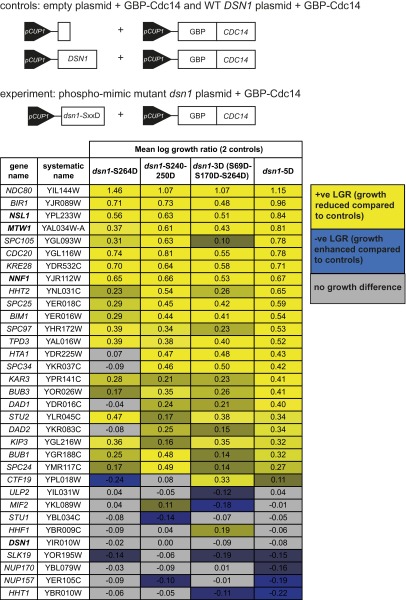Fig. S9.
Dsn1 phosphomimic mutants do not suppress the kinetochore-Cdc14 SPI phenotype. The GBP-CDC14 plasmid construct was introduced into the GFP-tagged kinetochore strains as before, but now including a second plasmid construct expressing a phosphomimic-mutant of Dsn1. Four mutants were generated: (i) Serine 264 to aspartic acid (dsn1-S264D); (ii) serines 240 and 250 to aspartic acid (dsn1-S240-250D); (iii) serines 69, 170, and 264 to aspartic acid (dsn1-S69D-S170D-S264D); and (iv) all five serines to aspartic acids (dsn1 5D). As controls, the GBP-CDC14 construct was used along with either an empty construct or a wild-type Dsn1 construct (illustrated at the top). A selection of average LGRs of the two controls with each Dsn1 mutant plus GBP-Cdc14 are shown in table format (for all data, see Dataset S5). Positive LGRs correspond to an increased growth defect (yellow cells) and negative LGRs correspond to a suppressed growth defect (blue cells). Members of the MIND complex are highlighted in bold.

